As an Amazon Associate I earn from qualifying purchases.
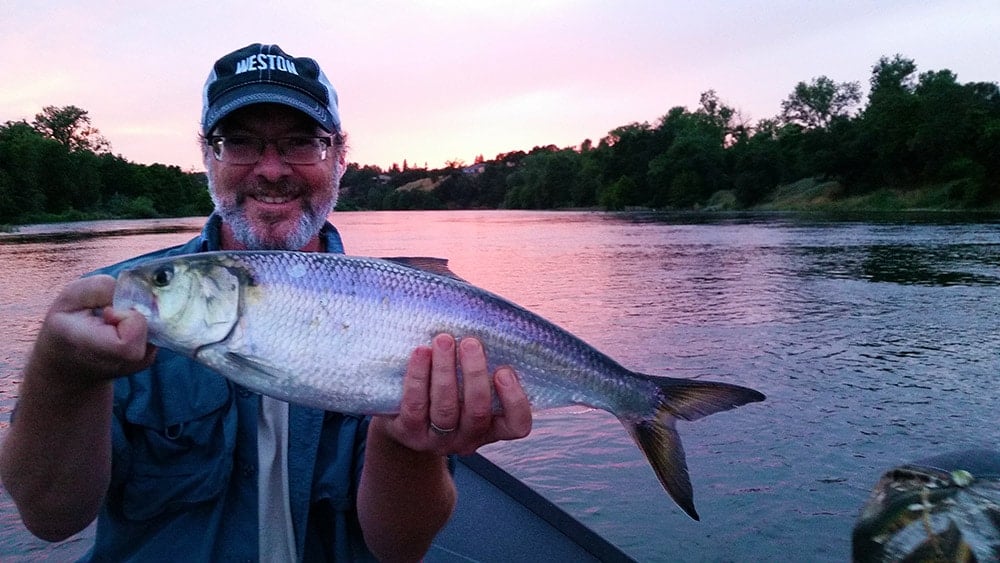
There was a time when the American shad was part of the rhythm of our spring, the way hunting turkeys or planting a garden is for many other folks. The great shad fish run, whether it is up an Eastern River or a Western one, is a singular event.
Thousands, and, in the West, millions, of fish swarm the rivers waiting for the temperature and flow to hit their sweet spot to spawn. Those anglers waiting for them can hook into a bonanza. Miss the run, and you are out of luck for a year.
Holly and I fished with our friend Jon Harrison of Five Rivers Guide Service last week and hit the run on the head. We were catching shad at will until a cold front blew in, and even after we still managed to land a dozen more, for more than 30 fish to the boat in four hours. We kept a dozen to eat fresh, smoke and pickle.
We are outliers. Shad no longer enjoys the favor it once did. The world’s greatest herring, its Latin name, Alosa sapidissima, means “the best shad to eat.” whole books have been dedicated to singing shad’s praises. George Washington was fond of the fish, and Thomas Jefferson always had it on his spring menus. Every restaurant from the Canadian Maritimes down to Florida would feature shad and its wonderful roe on spring menus; a few still do.
Then, in the 1870s, we brought shad West, and the species surpassed anyone’s wildest dream of success. The Columbia River run numbers 3 million or more, even today. In 1917, the commercial shad fishery netted nearly 6 million pounds of shad here in Sacramento.
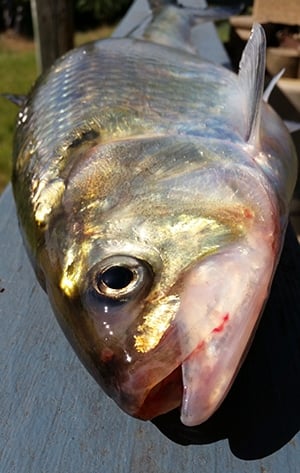
The meat of a shad can be better than that of the finest salmon. Seriously. Big hen shad lay up a huge store of fat: Some have as much marbling as the fattest farmed salmon. And if you bleed the fish when you catch it, the flesh is ivory white. The closest analog to it I can describe to you is a white king salmon or a sablefish — also called butterfish here in the West because they are so silky. And I am not even talking about the roe, which, among fish eggs, is second only to sturgeon caviar in flavor.
So what happened? The fish stocks are fine here in the West, and, after a long struggle, are recovering in the polluted East. What happened was, in a word, laziness.
The paradox of shad is that all that fine flesh is locked in a cage of bones. Lots of bones. More bones than any other fish I know of, and I have caught and eaten hundreds of species over the years. The skill to debone a shad was once a given among fish mongers and good shad anglers. But it is now a lost art.
(If you are up to the challenge, there is a great video tutorial. Part I is here, and Part II here.) I can debone a shad, but I am not terribly good at it. I admit to being too lazy to debone most of my shad, and I am pretty sure you will be, too, unless you dedicate yourself to the art; you’ll screw up dozens of fish before you get it down pat.
A shad is so bony there is an old Mi’kmaq Indian myth that tells of an unhappy porcupine, who, sad about his lot in life, asked the Great God Manitou to help him. Manitou must have one helluva sense of humor, because he turned the porcupine inside out, changed him into a fish, cast him into the river and named him shad. Nice god, eh?
Before you even get to the kitchen, you should know a few things about handling shad for the table:
- Hens are bigger, wider and, obviously, will have roe. They are fattier, but being larger, they have thicker bones. Little shad are almost always bucks, and are useful for pickling.
- When you catch a shad you want to keep, bonk it on the head and pop the gills to bleed it. Shad are incredibly bloody fish, and you want that blood out of the meat. Do this by grabbing the fish by the mouth and hanging it over the side of the boat, or in the river for a minute or so.
- Get the fish on ice ASAP. Being herring, shad spoil quickly. Ice is your friend. If you have the fish on plenty of ice, you can wait to gut them until the following morning if you were fishing at sundown.
- When you gut, know that the bottom of a shad is a bony keel. So make your incision to gut from the anal vent along the bottom side of the fish, being very careful to use only the tip of the knife. Run the knife tip along the belly meat and you will not slice open the roe sacs.
- For the most part, you need the skin on the fish. Smoked shad need not be scaled, but every other preparation below requires skin-on, scaled sides of shad.
So how do you handle all those bones? Let me walk you through your options.
First and best, learn to debone a shad with those videos I linked to above. If you do this, and have yourself deboned fillets, the greatest thing you can cook with them is to slather your fillets with sweet butter, cover with fine, seasoned breadcrumbs and broil until everything browns nicely.
Second best is to use your fillet knife to make dozens of thin cuts perpendicular to where the shad’s spine was, in order to cut through the little bones. You then dust the shad in tempura batter and deep fry. Here is the full recipe and details on the technique.
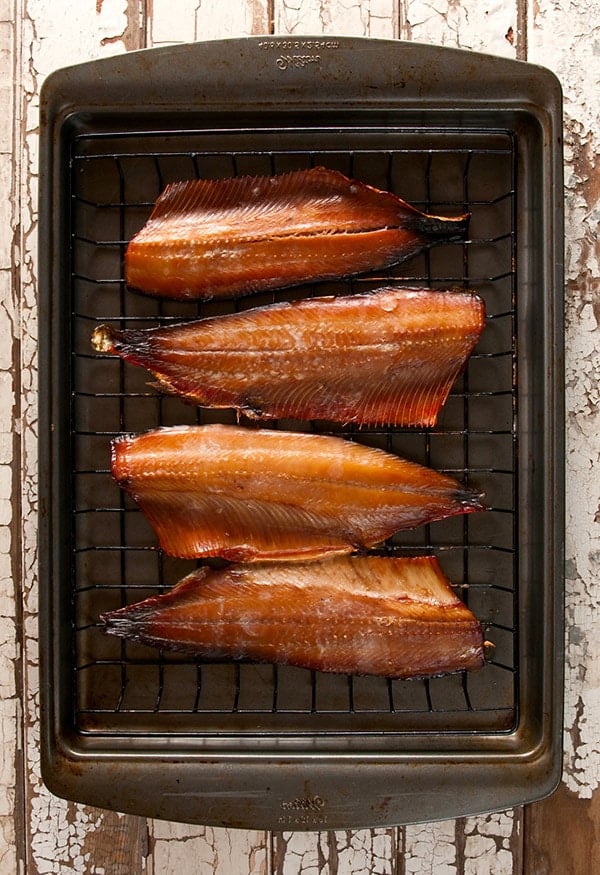
Another excellent option is to make smoked shad. This will not dissolve the bones, but you can flake out the smoked meat and use it to make some of the best “tuna salad” sandwiches you’ve ever eaten. When I am not feeling like fried fish, this is what I do a lot. You can also pound the flaked, smoked shad with butter and such and make shad rillettes or pate. Follow my recipe for salmon rillettes and sub in shad. Smoked shad is also a good addition to shad cakes.
How to make them? Two ways. First, you can poach the shad in broth or salted water and then flake out all the meat, using the meat to make fish cakes like my recipe for fish cakes with wild rice; I use this recipe for another bony fish, the northern pike. Or, you can chop the skinless shad roughly, bones and all, and buzz it in a food processor. This renders almost all the bones so small you won’t notice them in the cake.
You can also pickle shad, especially the little males, called bucks. They are often not too much larger than a herring, and they make excellent pickled fish. I’ll have a recipe up for them soon, but for now use either my recipe for pickled pike or my Swedish pickled herring recipe. This works because the acid in the vinegar dissolves the little bones.
Some people like to bake their shad for hours and hours, which will soften the little bones. Not my favorite. Ditto for pressure-cooking shad, which does the same thing faster. Shad is already a soft-ish meat, and these methods make the meat softer, which I don’t like. But to each his own.
One final option is to ditch your fork and pick up chopsticks. It is well known that Sacramento’s Southeast Asian community loves to catch and eat shad, and when you talk to them, they are just steaming or frying the shad and picking through the bones with chopsticks — it is way easier than with a fork, I can attest.
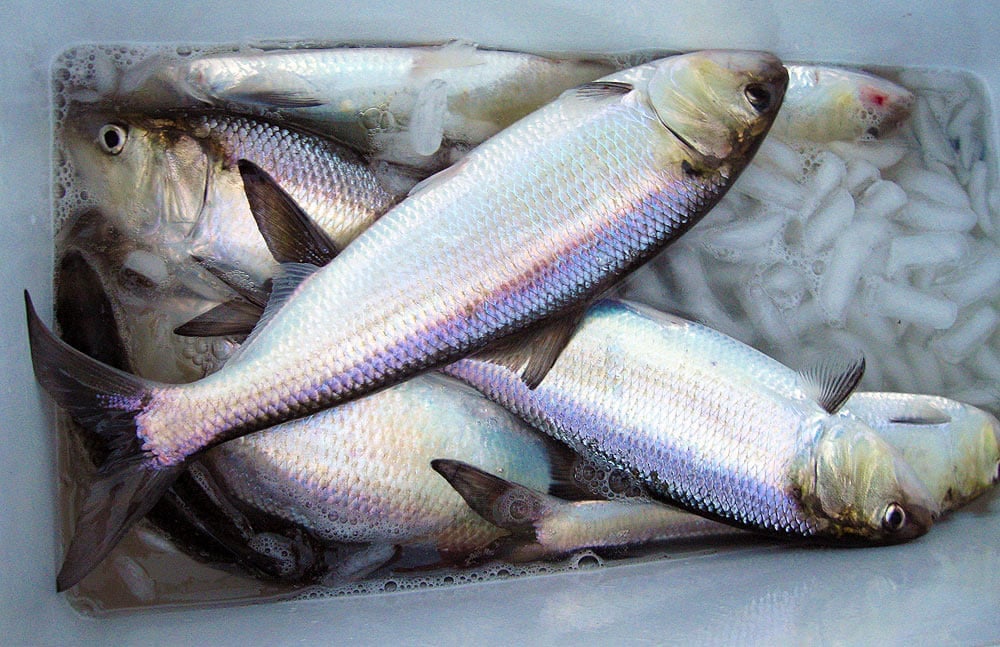
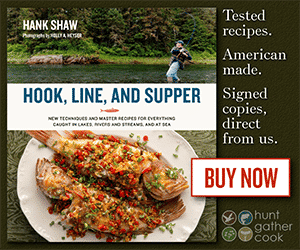
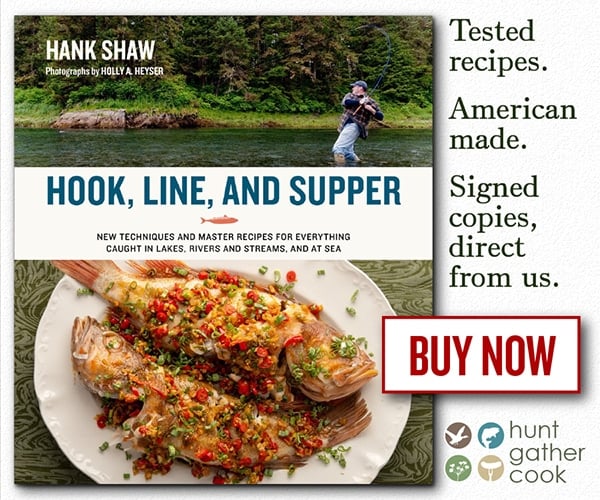
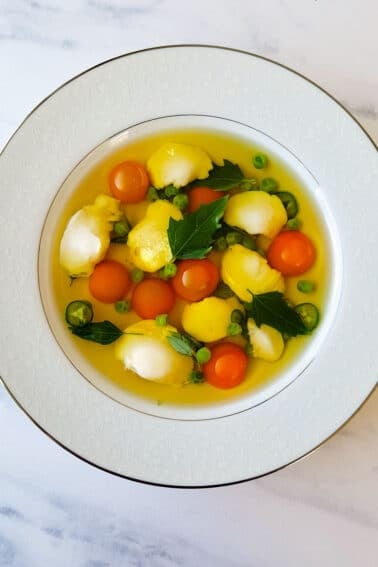
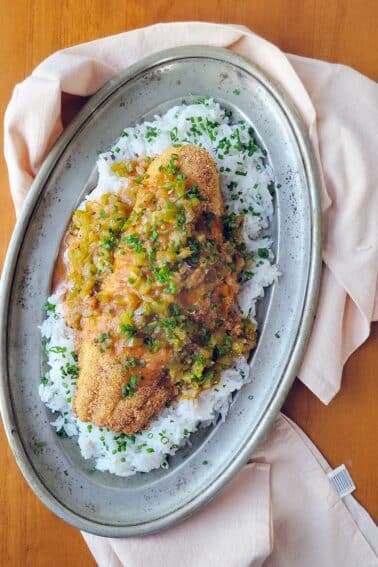
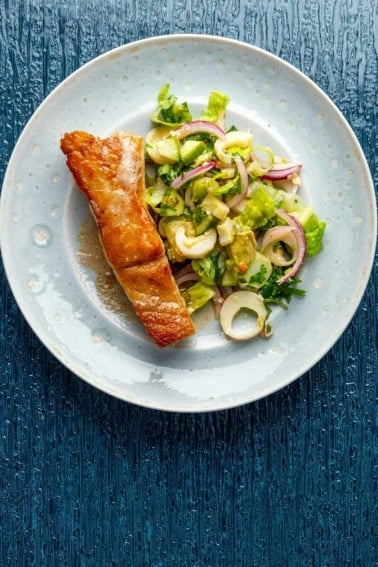
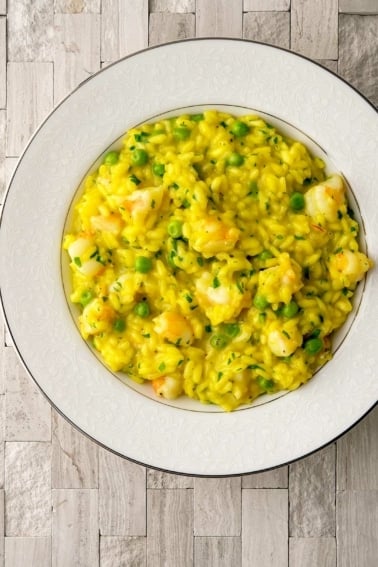
I’ve known about the shad runs on the Columbia River for a long time, but with the mixed reviews on the quality of shad from people I know, I’ve never made the effort to head down there and fish them. After reading this article, I realized I had a trip coming up near the end of the shad season where I was going to only be about 30 minutes from the Bonneville Dam on the Columbia where the shad come up in the millions every year. So, I picked up some shad darts before my trip and decided to make a detour to the dam on the way home. I’m hooked!! (pun intended) Seriously though, I’ll be paying close attention to the start of shad season from now on. With restricted time and my stop through at the slower end of the season, I only caught one hen, but she was a strong fighter and a fatty with a lot of delicious roe. Like you suggested, I bonked her, immediately bled her thoroughly, then into the bucket of ice I had brought with me. The funny thing is the other fishermen along the bank were looking at me like I was nuts, since the few other people who were catching shad were just bonking them, then putting them on a stringer and back into the not so cold river. No bueno was my thought on their process. When I got home, I ended up smoking my first shad. I can say in all honesty, it was some of the finest fish I’ve ever eaten and my whole family felt the same. Delicate, silky, smoky. It never made it into being a shad salad, we all just picked through it until it was gone. Thanks for making me a convert, I’ll be heading down again next season to catch a lot more!
Hank, after fishing this year for shad on Columbia, I spoke to an Asian lady at the dock, wondering what they do with the shad. She told me to look up Filipino recipes for “Spanish sardines” for the instant pot. I did find number of them, and used this one https://www.foxyfolksy.com/homemade-spanish-sardines/. We’ve made it already 2 times from frozen shad filets. I also canned this recipe in the spring right after my fishing.
I can tell you that it is fantastic dish. My wife and my mom love it. (And we have plenty of other fish, BTW.) My friends absolutely loved the canned version. You should try it, and maybe bring it to your readers with your own modifications.
You may never see thus, but worth a shot! Do you leave the skin on the fillet with this method? Does cooking this way help deal with the bones? How did you can them after? I’d love to hear more about it!
Mack: Yes, I leave the skin on. It keeps the pieces together. And yes, that’s why I do this, to deal with the bones.
Hank: You did not mention that Shad is the most fun fish to catch. Whether you anchor fish or cast to them, medium light tackle works best. I know folks who use fly rods too. The shad is a fish that never gives up…great fighters! They turn their slab sides into the fast water and the rodeo is on. They are also the best dungeness crab bait.
“Manitou must have one helluva sense of humor, because he turned the porcupine inside out, changed him into a fish, cast him into the river and named him shad. Nice god, eh?”
Manitou is by no means the only “trickster” god.
The Norse god Loki (Thor’s never wholly trustworthy half-brother) can be viewed that way.
Likewise I have read before that in at least one of the native tribes of the Pacific Northwest Raven is viewed as the god who created the world for his own amusement.
In the American Southwest the Apache tell mythic stories about “Coyote”, another trickster god.
Hank,
Have you tried to make your creamy fish soup with shad?
https://www.simplyrecipes.com/recipes/provencal_seafood_bisque/
Michael: I have not. It might be a bit fishy for that soup…
Dick Knights and Triple Teasers are fine lures for shad. But I live on the Columbia below Bonneville Dam and have boated hundreds of shad with just a silver or brass barrel swivel with a #4 or 6 hook on it. I suppose you could put a little colored nail polish on it.
I don’t know why I punished myself by clicking on this. It’s been 11 years since I left Sacramento and i still get the shad itch very badly. I can’t see a tuft of cottonwood on the breeze and not think “time for shad”. I live in Anchorage now, so I have no right to complain about my own fishing opportunities; but given the choice between sockeye fishing on the Kenai or shad fishing on the American I’d choose the American every time. Somewhat ironically, shad flies work great for sockeye. Yes I know, I know, sockeye don’t bite, but I’ve got some shad flies that would tell a different story 😉
You should mention fingers for eating shad. My asian family grills the whole shad, skin or wrapped in banana leaf until cooked. We then pick the meat and dip in sweet Indonesian soy sauce and sambal, with a squeeze of lime.
Did you ever get a good recipe for pickled shad up for us
The safest way to eat shad is with your bare hands. Let your fingers feel all the bones.
I live in Northern Virginia and Shad is about the only fish I care to eat. At the end of the shad season I will go down to the waterfront and buy myself a heap of shad and freeze it and the roe, but the fish I have to consume within 3 months though the roe lasts longer. I can never tire of this fish and can eat it for breakfast, lunch and dinner, everyday, all year. I am an expert with the bones and can breeze through an entire shad in 20 minutes or so. I eat the fish with minimal wastage and wipe the bones clean. It is frustrating for people to watch me eat when they are still struggling with their first piece and I am on my fourth. This fish has the lowest concentration of mercury (lives in the sea, only comes to spawn) and the highest concentration of omega-3 and is more flavorful than salmon but being exceedingly bony and therefore not a popular fish, at $2 to $4 dollars a pound cannot be beat. This year I have been very lucky in procuring shad early (in fact, in February), mostly buck shad, which I find is intensely more flavorful than the female and at least once I was able to get full grown roe shad as early as December. Last year, I had been speaking to the fish lady at the Safeway store about my fondness for the fish and she ordered some for me but I didn’t know about it. I happened to go into that store a couple of months after shad season had ended and she came running to me “ I have all this fish for you, take it off my hands and I will give you a good deal”. I ended up paying $22.50 for six filleted shads still packed in ice and 3 little buckets of roe (about 200 sacs)…Man, it was like hitting the mother-lode. In the old country in the Sindh region of Pakistan in the lower Indus Valley on the Arabian sea, where the finest sea fish abound, the Shad is still considered the fish par excellence ,so highly esteemed that it is not even considered a fish. For example if I go to the market to the fish shop and ask to see fish, the fish guy will show me all manner of fish but not shad. If I ask “ don’t you have any shad “? He will answer “ but sir, you asked to see fish.” So fish is fish and shad is shad – the king of fishes and the fish for kings.
Thanks, Hank, for your shad stories. I’ve loved the idea of them ever since I stumbled across a Dover reprint in college of a 1930s book called “It’s an Old New England Custom” that had a chapter on New England’s spring shad runs of yore. Then last spring, my fishmonger in Portland, Maine, offered shad and shad roe — saying they were making a comeback on the East Coast — and had a specialist out back who knew how to bone them! Delicious.
Hello! I want to first say thank you so much for this site. I have only been following for a couple of weeks, but since I’ve found it, I visit almost daily.
I have been inspired for a while to go to more of a ‘back to nature’ diet, focusing on what I can grow, hunt, and forage. I’ve been starting a garden for the first time since I was a kid. And I’ve gotten into fishing. I would like to hunt more, but as of yet, havent done much of it.
I was specifically wondering about knives. I have a single set of knockoff, made in china, fillet knives, but when I get halfway into a largemouth bass fillet, it bends, or dulls against the backbone.
Is there a knife, or set of knives you can recommend? Granted, quality often has a higher cost associated with it, I would rather spend $50 on a knife that will last a decade, but am not sure where to start.
I certainly appreciate any insight you can offer.
Cheers!
John
John: I use Kershaw or Normark fillet knives. Both are good quality and both are easy to sharpen, which you will need to do a lot if you catch lots of fish.
Hank:
Great info on cooking and smoking shad! Do you have any experience cooking another local fish – the Pike Minnow? It is not really a pike, but rather it is a fish in the minnow family that lives all up and down the Sacramento valley. Adults are often 24 inches long or more. I have been told that they are not good to eat. You can see photos at: https://calfish.ucdavis.edu/location/?uid=113&ds=694
Please advise.
Thank you,
Jim
James: Yes, I’ve eaten them. They have an extra set of bones like a pike, and are fatty, which can be nice. But, they are loaded with mercury, so eat them sparingly.
Glad you gave the links to Captain Vince Russo’s shad deboning videos. He is a fish cleaning savant! Now it’s time to get my fishing buddy off his butt and get us some shad.
Another way to soften the bones is to cut down a tree with the shad. Since they are little bigger than herring, it should go quickly (relatively).
or u can just chew them out..